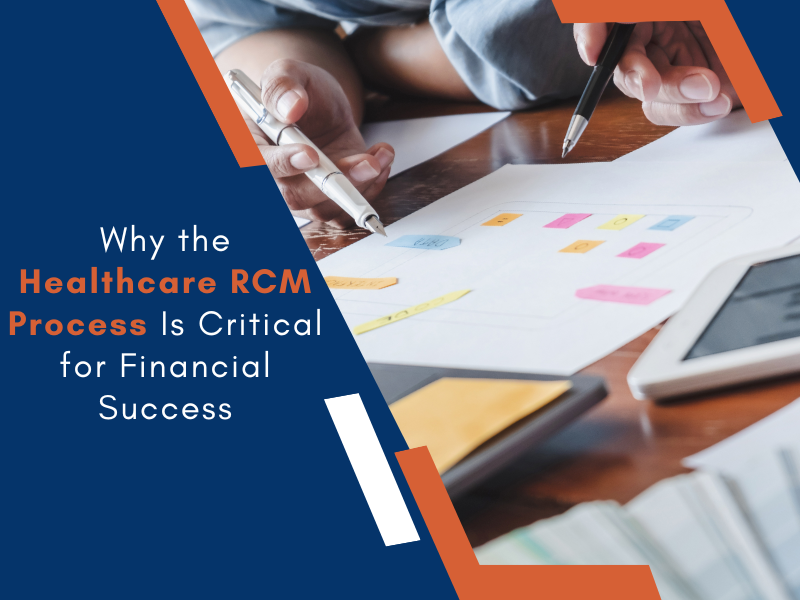The medical credentialing process is a critical yet often time-consuming step in ensuring that healthcare providers meet the necessary standards to offer care. Whether you’re a solo practitioner or part of a large healthcare organization, streamlining this process can significantly reduce delays, allowing you to begin providing services faster and more efficiently. Given the complexity of medical credentialing, any steps that can reduce the time and effort involved are highly valuable.
Here are some practical tips to help speed up your medical credentialing process while maintaining high standards of quality and compliance.
1. Start Early
The first and perhaps most crucial tip is to start the medical credentialing process as early as possible. Some insurance companies or state licensing boards may take several months to process applications, so initiating the process well in advance of the provider’s start date is key. Whether you’re credentialing a new provider or renewing an existing one, give yourself plenty of time to gather the required documentation and ensure all applications are correctly submitted.
2. Organize Documentation
Medical credentialing requires a substantial amount of paperwork. These include medical licenses, diplomas, training certificates, work history, and malpractice insurance details. Being well-organized from the start will save valuable time. Use a checklist to ensure that you have gathered all the necessary documents. Additionally, keeping digital copies of all essential documents in a secure, easily accessible folder can prevent last-minute scrambling when something is required.
3. Ensure Accuracy
Errors and missing information are among the leading causes of delays in the medical credentialing process. When filling out credentialing applications, double-check that all information is correct, complete, and up to date. Even small mistakes, such as a typo in a provider’s name or an incorrect license number, can cause significant delays.
Ensure that you are aware of all the specific requirements for each insurance company or regulatory body. Some payers may require additional documentation, while others may have different deadlines or standards for medical credentialing.
4. Follow Up Regularly
Once your medical credentialing application has been submitted, it’s easy to assume that everything is proceeding smoothly. However, frequent follow-ups with insurance companies or credentialing bodies are essential to ensure the application is progressing. Providers often experience delays simply because their application is sitting in a queue or waiting for additional information. Be proactive and check the status of your applications every couple of weeks to ensure there are no unexpected hold-ups.
5. Outsource Credentialing Services
Medical credentialing is a labor-intensive process that requires a significant amount of administrative work. By outsourcing your medical credentialing services to a professional credentialing specialist, you can reduce the time and effort required to complete the process. Third-party credentialing companies are experts in handling the paperwork and maintaining compliance with industry standards. Outsourcing this task allows your internal team to focus on other important operational duties while ensuring that credentialing is handled efficiently and correctly.
6. Use Credentialing Software
Automation is another way to speed up the medical credentialing process. Credentialing software can help organize documents, track progress, and remind you of key deadlines. Many software platforms also integrate with healthcare systems, allowing for more seamless data sharing. Automated systems reduce the risk of human error and can dramatically improve the speed at which applications are processed. If you’re not already using credentialing software, it’s an investment worth considering.
7. Maintain Up-to-Date Records
It’s essential to keep the credentialing information for all healthcare providers up to date, even after the initial approval. Insurance companies and regulatory bodies often require ongoing renewals, and failing to stay on top of these can lead to delays or even the loss of credentialing status. By ensuring that all certifications, licenses, and other credentials are renewed before their expiration dates, you can avoid unnecessary interruptions in service.
8. Communicate with Providers
In many cases, delays occur because the provider being credentialed fails to supply required documentation or respond to inquiries in a timely manner. Maintaining open lines of communication with the provider throughout the process can prevent these issues. Make sure that the provider understands the importance of prompt responses and is aware of any deadlines or requirements that need to be met. This level of communication can help to ensure a smooth and timely credentialing process.
9. Preemptively Address Red Flags
Insurance companies and hospitals may flag certain issues during the medical credentialing process, such as gaps in employment, malpractice claims, or disciplinary actions. If you know in advance that any of these issues may arise, it’s best to proactively address them in the application. Provide clear explanations and documentation to avoid delays or rejections. By dealing with these potential obstacles upfront, you can often prevent lengthy delays in the credentialing process.
10. Work with Multiple Payers Simultaneously
If you plan to credential a provider with multiple insurance companies, it’s more efficient to work on all the applications at once, rather than completing them one at a time. This approach allows you to streamline the process, as much of the required information will overlap. By working with all payers simultaneously, you can ensure that the provider is credentialed with multiple organizations in a shorter amount of time.
11. Leverage Professional Networks
Having a strong network of professional connections can also expedite your medical credentialing process. This is particularly true if you are credentialing providers for specialized care or working with smaller insurance companies. Your professional network can help you navigate the nuances of certain insurance companies and potentially speed up the review process.
12. Monitor the Entire Process
It’s not enough to simply submit an application and wait for a response. Active monitoring is crucial to ensure that there are no unnecessary delays. Whether you’re working with a credentialing service, software, or managing the process in-house, keeping track of every step is essential for success. Setting reminders for follow-ups, keeping detailed records of communication, and ensuring that nothing slips through the cracks will help you avoid last-minute surprises.
Conclusion
By implementing these tips, healthcare providers and organizations can significantly reduce the time it takes to complete the medical credentialing process. Timely credentialing is vital to maintaining a steady flow of revenue, ensuring compliance, and improving patient satisfaction. A streamlined credentialing process can help healthcare providers begin seeing patients faster and focus on what truly matters—delivering excellent patient care.
For organizations looking to simplify and expedite their medical credentialing process, Apaana Healthcare can provide the expertise and support you need. Apaana Healthcare drives operational excellence with global healthcare management solutions. We specialize in outsourced services for health plans, covering member enrollment, claims administration, medical billing & coding, and provider engagement. Our team of experts ensures that your medical credentialing is handled efficiently, cost-effectively, and with the highest standards of compliance, so you can focus on providing exceptional care to your patients.
Explore how Apaana Healthcare can help you streamline your medical credentialing process and meet all your healthcare management needs, ensuring faster turnarounds and better outcomes for your practice.
FAQs
What is medical credentialing, and why is it important?
Medical credentialing is the process of verifying a healthcare provider’s qualifications, experience, and legal eligibility to provide care. This process is crucial because it ensures providers meet industry standards, helps secure insurance reimbursements, and ensures compliance with regulatory bodies.
How long does the medical credentialing process usually take?
The credentialing process can vary depending on factors like the provider’s qualifications and the payer’s requirements. On average, it may take anywhere from 90 to 120 days. Starting early and organizing documentation can help minimize delays.
What documents are needed for medical credentialing?
Typically, documents include medical licenses, board certifications, diplomas, training certificates, work history, malpractice insurance, and letters of recommendation. Requirements may vary based on the payer or regulatory body.
Can a provider see patients while the credentialing process is ongoing?
In most cases, providers cannot bill insurance or receive reimbursements for services until credentialing is complete. However, some healthcare organizations may allow providers to see patients on a limited basis, depending on their policies
How can I reduce delays in the credentialing process?
Starting early, organizing documentation, ensuring accuracy, following up regularly, and using credentialing software are effective ways to reduce delays. Working with a professional credentialing service can also streamline the process.
What is the role of credentialing software in the process?
Credentialing software can automate tasks like tracking application progress, managing documents, and sending reminders for renewals. Automation reduces human error and speeds up the credentialing process by simplifying data management and compliance tracking.
What are the benefits of outsourcing medical credentialing?
Outsourcing credentialing to a specialist can save time, reduce administrative burdens, and improve accuracy. Credentialing companies have expertise in compliance and payer requirements, ensuring a faster and more efficient process.
How frequently do providers need to renew their credentialing?
Renewal timelines vary based on payer and regulatory requirements, but it’s generally every two to three years. Some healthcare organizations may have internal guidelines to ensure credentialing information remains up to date.
What can cause an application to be delayed or denied?
Common issues include incomplete or inaccurate documentation, errors in provider details, and failure to follow specific payer requirements. Addressing potential issues like gaps in employment or malpractice claims upfront can help prevent delays.
How does credentialing with multiple insurance companies work?
It’s often best to apply to multiple payers simultaneously to avoid delays. Many payers have overlapping requirements, so completing applications together can save time and ensure broader coverage for patient reimbursements.





